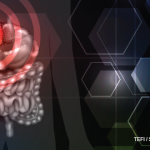Researchers used flow cytometry to complete peripheral blood immunotyping for each participant. Patients with RA exhibited a substantial increase in the proportion of CD4+ effector memory T cells re-expressing CD45RA (TEMRA), amounting to 6.9% vs. 3.7% in healthy controls. Patients received treatment with various biologic or targeted synthetic DMARDs, including Janus kinase (JAK) inhibitors, tumor necrosis factor (TNF) inhibitors, interleukin (IL) 6 blockers and cytotoxic T lymphocyte-associated antigen 4 immunoglobulin (CTLA4-Ig).
Blood-based immunophenotyping enabled the researchers to stratify the patients into five groups on the basis of immune cell characteristics. The five groups showed different clinical features and varied responses to treatment, based on clinical remission at 26 weeks or achievement of low disease activity. The immunotype group comprising 74 patients with increased activated CD4+ T cells, CD8+ T cells and plasmablasts—indicating abnormalities in T cell and B cell differentiation—showed the highest disease activity, as measured by CDAI. This group also exhibited the highest values for the Health Assessment Questionnaire, C-reactive protein and erythrocyte sedimentation rate. However, these values did not differ among the other immunotype groups.
JAK inhibitors were linked to increased efficacy across the groups. An increased efficacy of IL-6 inhibition occurred in a group of 93 patients—the youngest group with a mean age of 54 years—presenting with an immunotype almost identical to healthy controls. Another group of 134 patients exhibited reduced activated Tc1 cells, but otherwise displayed a similar immunophenotype to healthy controls.
TNF inhibition appeared more effective in the immunotype group of 139 patients with increased CD4 TEMRA.
Meanwhile, CTLA4-Ig appeared most effective in the group of 89 patients exhibiting an increase in Th1 cells in addition to CD4 TEMRA.
“Immune clusters in these patients cannot be distinctly delineated using existing clinical syndromes or serum markers. Contrarily, our findings reveal that certain groups of patients with RA exhibit immunophenotypic patterns similar to those found in healthy individuals,” the authors write.
The researchers noted that validating the difference in biologic or targeted synthetic DMARD efficacy within the five immunophenotype groups would require many more patients. Instead, they matched the patients with biologic or targeted synthetic DMARD expected or unexpected to be effective based on the immune profiles. The expected group outperformed the unexpected group, with a higher remission rate at 26 weeks, at 39.9% vs. 24.6%, and a greater achievement of low disease activity, at 80.8% vs. 60.2%.
The researchers validated the findings in a separate cohort of 183 patients with RA naive to biologic or targeted synthetic DMARDs, comprising 73.8% women with a mean age of 62.2 years. The expected group showed a higher remission rate than the unexpected group, at 33.5% vs. 18.2%.

